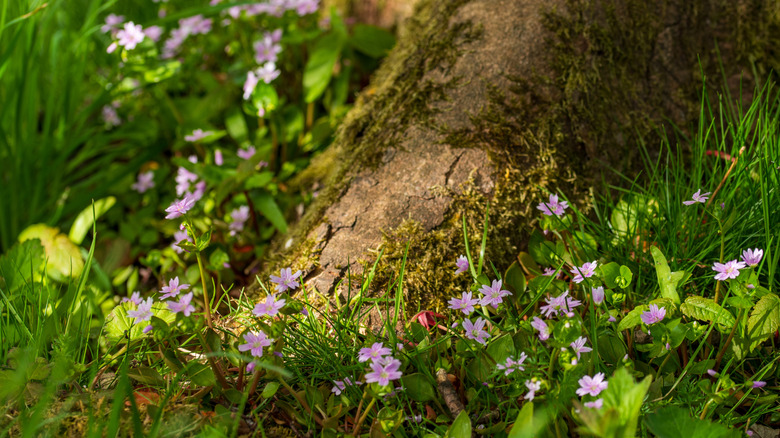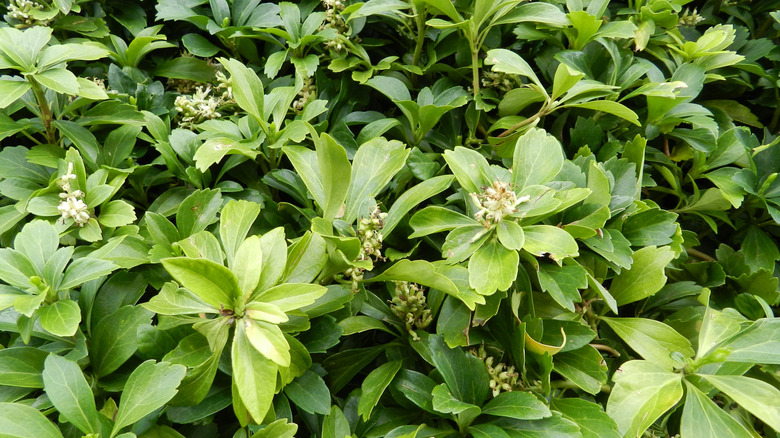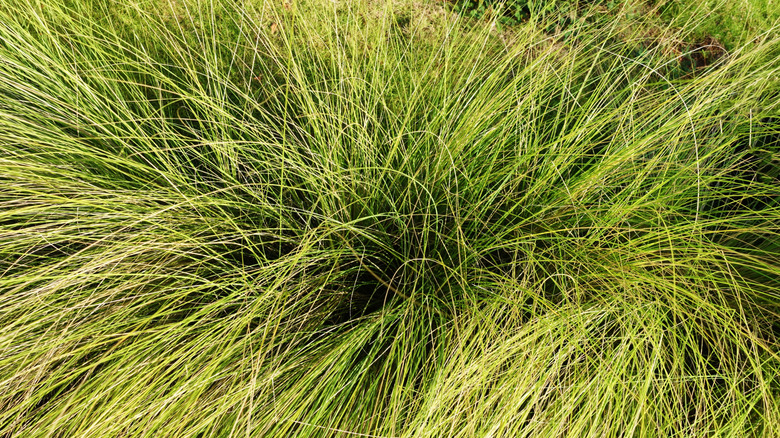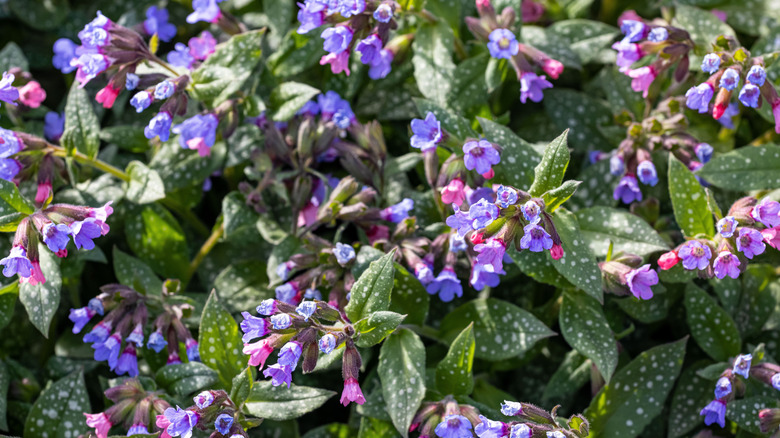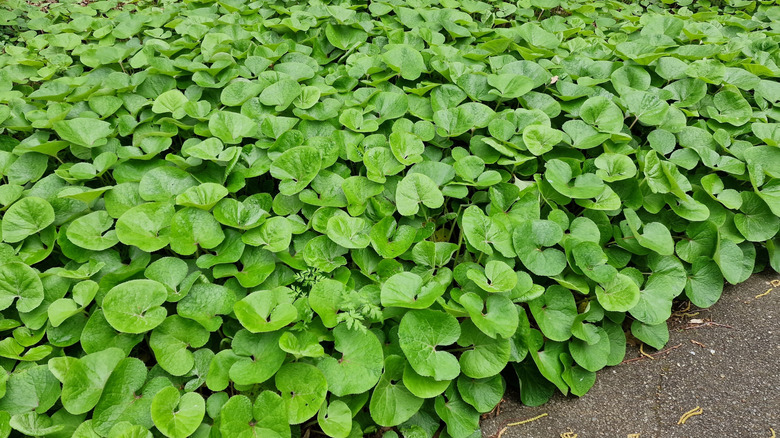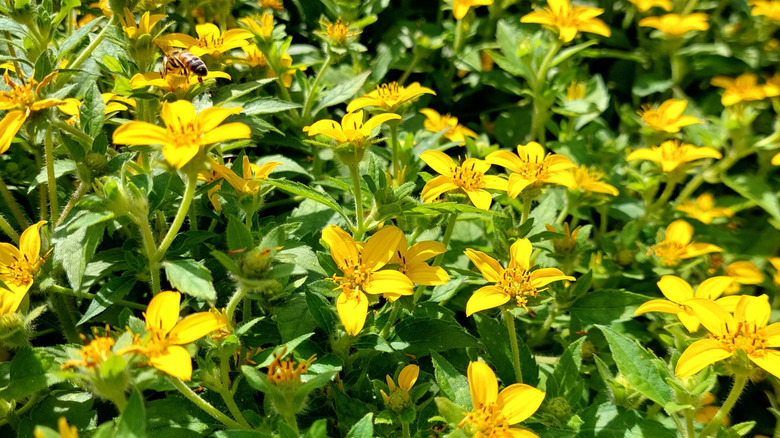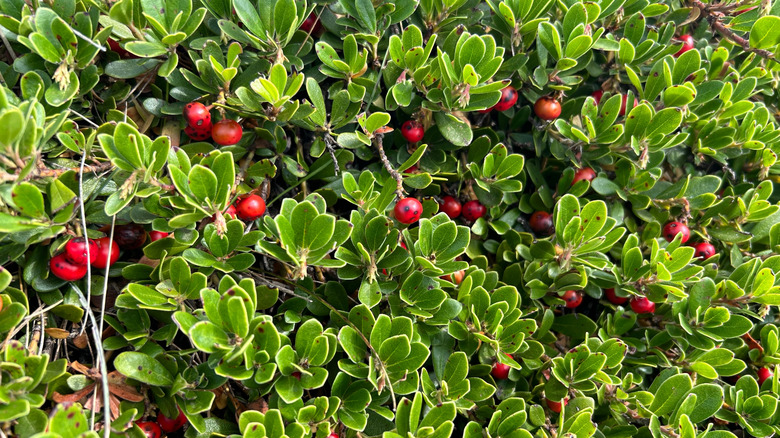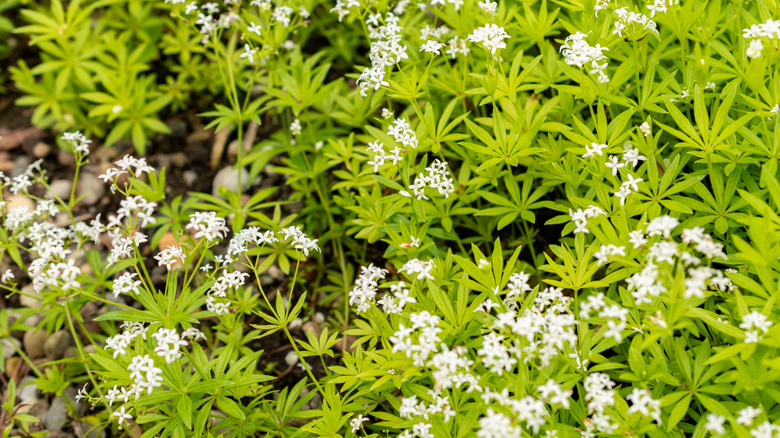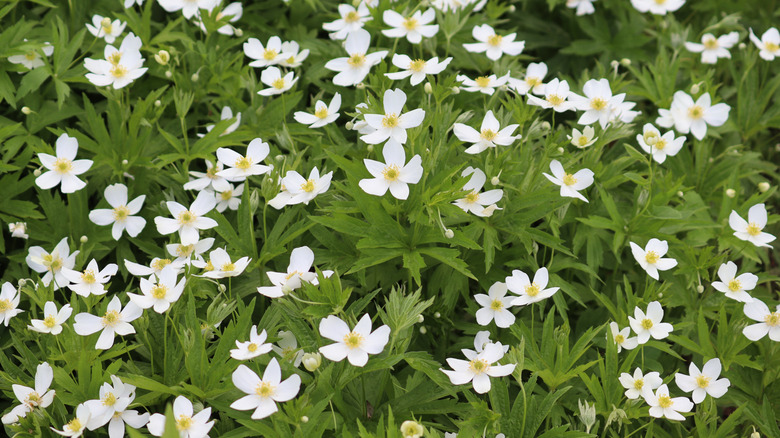Cover Unsightly Tree Roots With 11 Ground Covers That Make A Gorgeous Living Mulch
If your yard's real showpieces are trees rather than garden beds, it can be a challenge to figure out how to landscape the space beneath them. On the one hand, you want to maintain the health of the soil; on the other, it's a bit tricky to figure out which plants won't mind competing with a tree for light. You might be tempted to throw down some chipped wood mulch and call it a day. And hey, at least that way you can control weeds and prevent some types of soil erosion, as well as temperature and moisture fluctuations.
But what about a living mulch? Certain ground covers, such as sweet woodruff and Pennsylvania sedge, can provide many of the same benefits as organic mulches. Additionally, as their roots dig into the soil, they aerate it and provide space for water to be absorbed. Some living mulches are flowering plants, which can draw beneficial pollinators — especially ideal for fruit trees!
When deciding on a living mulch, there are a few important criteria to keep in mind. You'll want something hardy that requires little maintenance, will thrive in the conditions naturally present around your trees, and will be able to outcompete weeds ... and preferably something that will spread on its own or with minimal help. Another element to keep in mind is that if the plant or plants you select spread, you want to be sure that they're not invasive or too aggressive to keep up with. (Luckily, there are many possible selections that are native to the U.S.!)
Allegheny spurge
An attractive southeastern U.S. native species, Allegheny or mountain spurge (Pachysandra procumbens) is a drought- and shade-tolerant ground cover ideal for the dappled shady spots beneath large trees. Hardy in USDA Zones 5 through 9, it's evergreen or semi-evergreen above zone 7. Although it spreads via rhizomes to form dense mats that can fill in empty spaces, it's a slow grower, so you won't have to worry about it overwhelming your garden. In the spring, you can enjoy fragrant spikes of tiny white and pink flowers. Just give it a good soak every eight to 15 days.
Pennsylvania sedge
Of the many U.S. native sedges frequently used for living mulch ground covers, Pennsylvania sedge (Carex pensylvanica) is one of the most popular and reliable. Well suited to zones 3 through 8, the grass tends to prefer a cooler climate and thrives in dry shade (unlike other sedges, which prefer wet or moist soils). You can use it as a turf alternative in heavy-shade areas where most lawn grasses won't happily grow and can mow it twice a year to maintain a lower height. Its semi-evergreen foliage will maintain its color until the very coldest parts of winter.
Lungwort
With lovely silvery foliage and flowers that change color as they age, lungwort (Pulmonaria spp.) is a living mulch that can bring a bit of magic to the shady areas beneath trees. In zones 5 through 9, lungworts are low-maintenance and long-lived perennials that spread slowly using rhizomes. Most cultivars prefer moist soil rich in organic matter. Add compost or peat moss in your desired site if it doesn't meet that criteria, and water well during dry periods. Varieties and hybrids of P. saccharata, P. angustifolia, and P. longifolia are available for diverse leaf and flower colorations.
Canadian wild ginger
With no relation to culinary ginger (Zingiber officinale) — although its roots are spicy and can be used in cooking as a substitute — Canadian wild ginger (Asarum canadense) has attractive glossy leaves that make striking cover for tree roots. It's easy to grow and care for in zones 4 through 6, as long as you provide it with a spot in partial or full shade that has moist, preferably acidic soil (though it is quite tolerant of drought once it's well established). Native to the woodlands of eastern North America, Canadian wild ginger is a vigorous rhizomatic grower.
Green-and-gold
Another U.S. native, green-and-gold or goldenstar (Chrysogonum virginianum), grows wild along woodland edges, making it a natural choice for ground cover under trees. This living mulch thrives in moist, shady spots in zones 5 to 9. In ideal growing conditions, it'll deliver a show of five-petaled yellow flowers from spring through fall, particularly in areas with cooler summers. If you're trying to fill a lot of square footage, C. virginianum var. australe is a fast-spreading variety that will quickly colonize large areas using rhizomes. Amend heavy soils with composted pine bark to reduce root rot from poor drainage.
Common blue violet
This one might be controversial, since some people eternally battle unwanted blue flowers in their lawn, but if you're determined to cover shaded ground beneath trees where soggy or compacted soil might not be welcoming to other plants, the common blue violet (Viola sororia) will happily grow where little else will. Vigorous rhizomatous spreaders — as well as self-seeders — these pretty little U.S. native flowers are even resistant to the allelopathic effects of black walnut. If you aren't concerned about violets potentially competing with turfgrass, they'll make an attractive, pollinator-attracting living mulch in zones 3 through 7.
Common bearberry
Also known as kinnikinnik, the U.S. native common bearberry (Acrtostaphylos uva-ursi) is a good selection for sites that receive a bit of dappled sunlight, like beneath a tree with less densely crowded branches. A creeping evergreen perennial that produces edible berries (tasteless to humans but loved by wildlife), common bearberry is best grown in cooler climates such as those found in zones 2 through 6. With its thick foliage, it's an especially good choice as a living mulch to combat soil erosion from rain while working to retain soil moisture. Its small white flowers are attractive to hummingbirds.
Bigroot geranium
An ideal living mulch for dry shade in particular, bigroot geranium (Geranium macrorrhizum), or scented cranesbill, is a semi-evergreen perennial that is suited to zones 3 to 8. It produces long-lasting, showy spring blooms in a range of colors, depending on the variety — the magenta-hued 'Bevan's Variety' is a particularly attractive choice. Drought-resistant thanks to its thick rhizomes, bigroot geranium is also resistant to black walnut and typically isn't bothered by rabbits or deer. Better yet, it requires little maintenance other than trimming off spent flowers for visual neatness, and even shows off some lovely fall color.
Sweet woodruff
A fragrant shade-loving plant, sweet woodruff (Galium odoratum) is one of the few non-U.S.-natives on this list. A member of the coffee family, this perennial's foliage and little white flowers both smell sweet — like freshly mown hay — and are actually safe to eat. Spreading by both rhizomes and seeds, sweet woodruff can get a little aggressive when it's really comfortable, but that's ideal if choking out weeds is your goal. Sweet woodruff is hardy in zones 4 through 8 and can handle both black walnut and drought (though it will appreciate some extra watering during dry spells).
Golden ragwort
Native to the woods, wetlands, and ravines of eastern North America, golden ragwort (Packera aurea) is one of the taller perennial members of the daisy family. Using underground rhizomes, it spreads to form large, dense colonies that can easily shoulder out weeds in moist shade. Cheerful yellow flowers appear in spring and summer. It even blooms well in shade — perfect for adding a splash of color beneath trees. Pollinators are drawn to its flowers, and after the blooms are spent, you can expect to see songbirds visiting the seedheads. Zones 3 to 8 are best for golden ragwort.
Canada anemone
A living mulch that attracts butterflies and bumblebees, Canada anemone (Anemone canadensis) is a good choice for understory ground cover for a mature, high-canopied tree. This rhizomatous plant can tolerate wetter soil than some other ground covers and is suited to zones 3 through 8. It prefers moist soils rich in organic matter, but is highly adaptable and easy to care for. Although this North American native can be an aggressive spreader in sunny conditions, it may be more polite in partial shade. With rich green foliage and spectacular white summer blooms, Canada anemone is a low-maintenance stunner.
